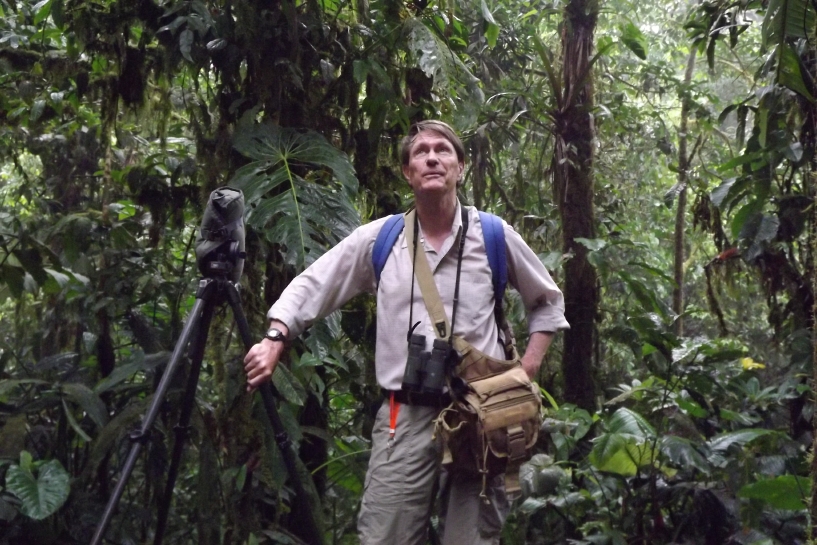
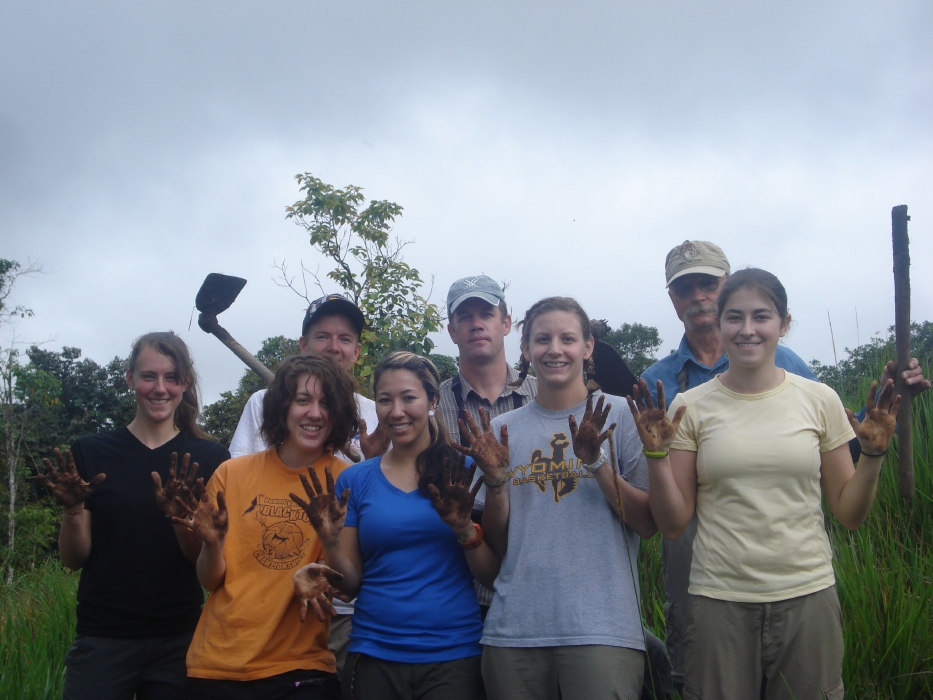
Left: Dave McDonald has been fascinated by the behavior of manakins in the tropics for a very long time.
Right: hands-on reforestation during the May 2013 UW student course at Milpe. Photos by Reg Rothwell (back row, right).
What:
Interested in a trip to Ecuador with University of Wyoming professor Dave McDonald?
The trips are open to the public ($1,500/person + airfare)
(
not restricted to students, nor to Wyoming residents, no experience in “bird-watching” needed).
UW students: 4-credit course will likely take place about 2-12 January 2019. See fliers in BioSci and Berry Center or send me an email
When: Likely, 12 to 22 January 2019 (starts on a Saturday, arrive US Wed 23-Jan)
Where: west slope of the Andes; Tandayapa valley between Nanegalito and Mindo, Ecuador.
Expected cost: ~$2,700 – total includes airfare ~$1,200 RT U.S. to Quito Ecuador, plus ~$1,500 that will cover ALL in-country travel, lodging and meals.
Accommodations: Simple 2-person rooms, some with shared and some with private bathrooms (h/c shower, h/c sink, toilet).
The rooms with private bath are available on a first-come, first-servd basis.
Three hot meals/day near a patio, with hummingbird feeders (visited by about 15 of Ecuador’s 123 species of hummingbirds).
Contact/followup: If you are interested, send an email to Dave McDonald dbmcd "at" uwyo.edu
The Andes and Amazonian lowlands of South America have the most diverse assemblage of birds in the world. Ecuador straddles the equator and has land on both slopes of the Andes. Although Ecuador is only very slightly larger than Wyoming, Ecuador has four times as many species of birds (> 1,600 species). This 10-day “course” will introduce you to one of the biodiversity hotspots of the world, instill an appreciation for the plants and animals, especially the birds, and allow you to get hands-on experience in exploring the fascinating repertoire of behaviors exhibited by the animals (including birds, mammals, amphibians and invertebrates) that live there.
The main field site, Puyucunapi, is a private dairy farm (200 hectares, 2,000m/6,600ft elevation) with a conservation easement/agreement with the Mindo Cloudforest Foundation, which owns the Milpe Reserve
(http://www.mindocloudforest.org/milpe-bird-sanctuary/);
excursions will include Milpe (1,100 meters) and the Rio Silanche Reserve (350 meters), and a last night at Antisana Reserve (Andean Condors, Carunculated Caracaras, paramo/tundra), at each of which most of the plants and animals will be different. The Christmas Bird Count in nearby Mindo has several times had the world's highest total (>500 species in a single day). Days will be long, typically with early rising and extensive hiking, but activities can be adjusted to almost every age and health level.
Evening lectures and presentations by graduate students, faculty and other researchers will supplement the field experience.
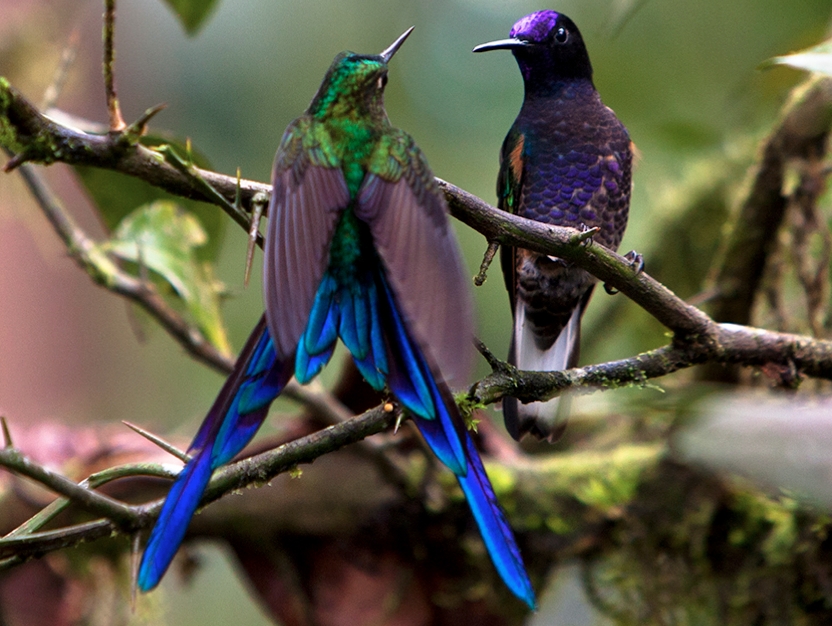
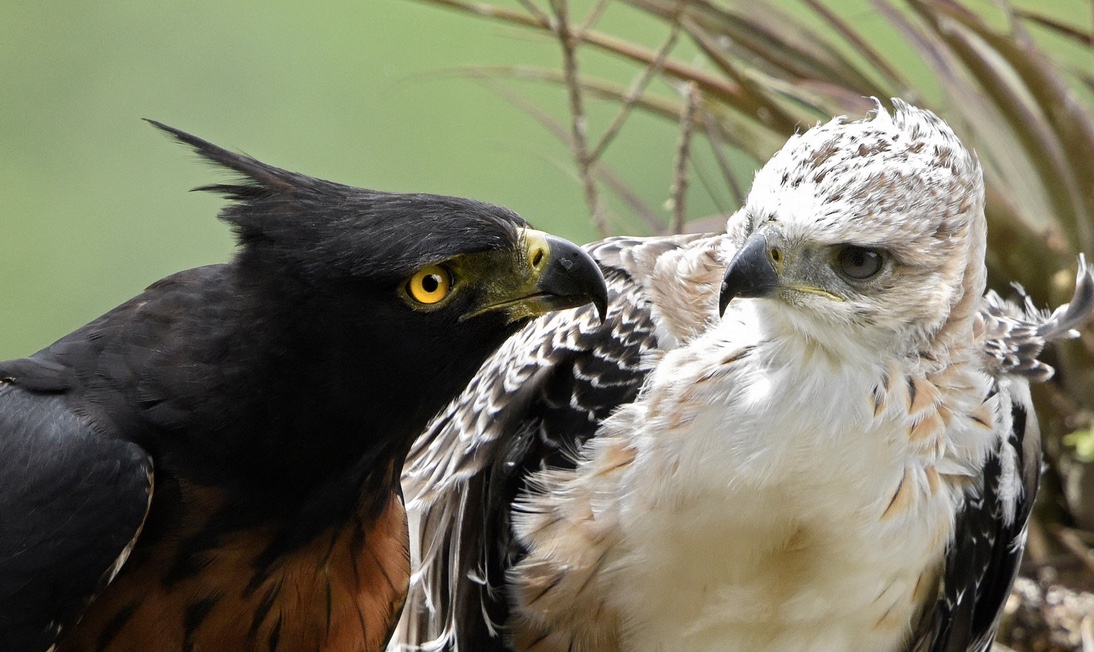
Travel with a purpose: Your monetary contribution will help defray the costs of Ecuador research on Golden-winged Manakins by McDonald
and his graduate
and undergraduate students at U. of Wyoming. It will also support a new research and conservation effort on the Black-and-chestnut Eagle (see photo above),
a magnificent endangered emblem of South American cloudforests.
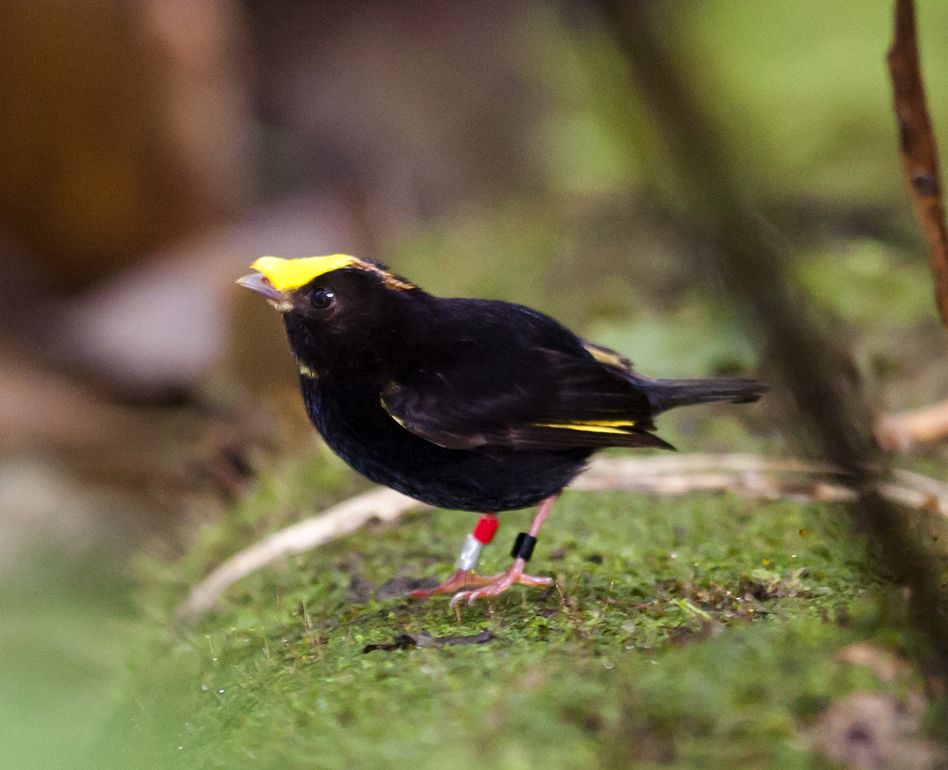
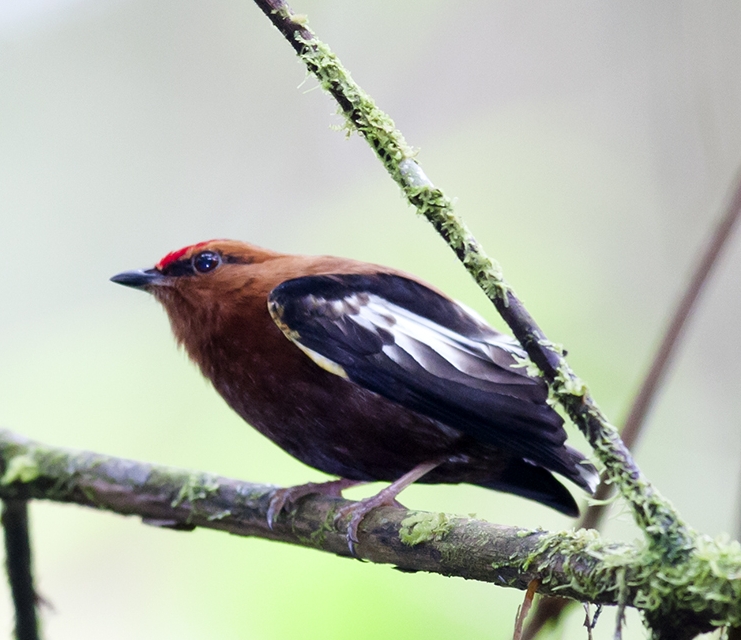
Dave McDonald and his students have begun studying the complex social behavior of male Golden-winged Manakins at the Milpe Reserve since 2013.
Milpe has three of the ~51 species of manakins, an exclusively Neotropical family of birds (Pipridae), most of which have lek mating systems, and some of which have
the highly unusual twist of male-male cooperation in courtship display.
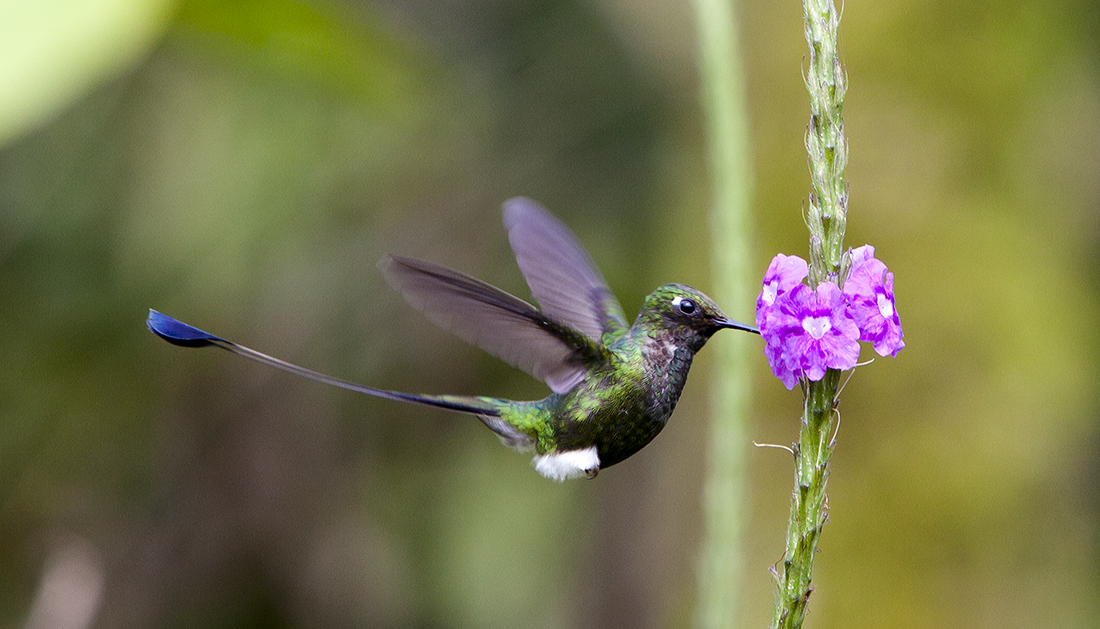


Left: Dave McDonald has been fascinated by the behavior of manakins in the tropics for a very long time.
Right: hands-on reforestation during the May 2013 UW student course at Milpe. Photos by Reg Rothwell (back row, right).
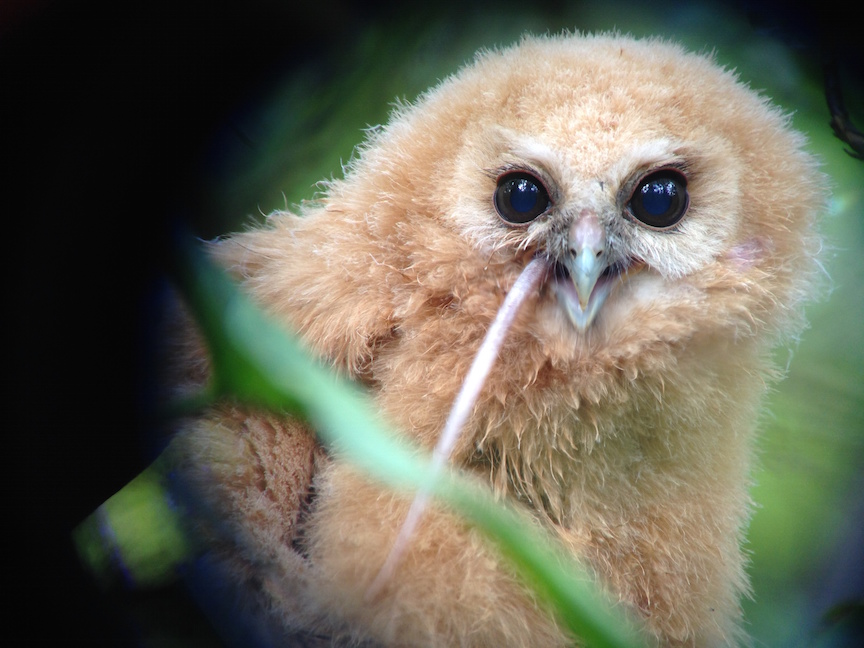
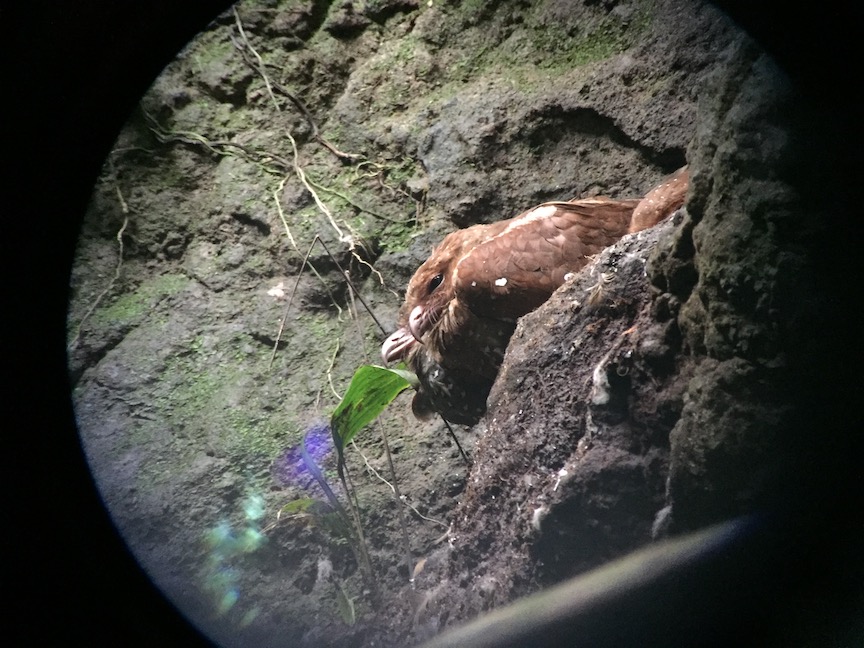
We see two or three species of owls fairly regularly (Black-and-white Owl, Crested Owl and Colombian Screech-Owl).
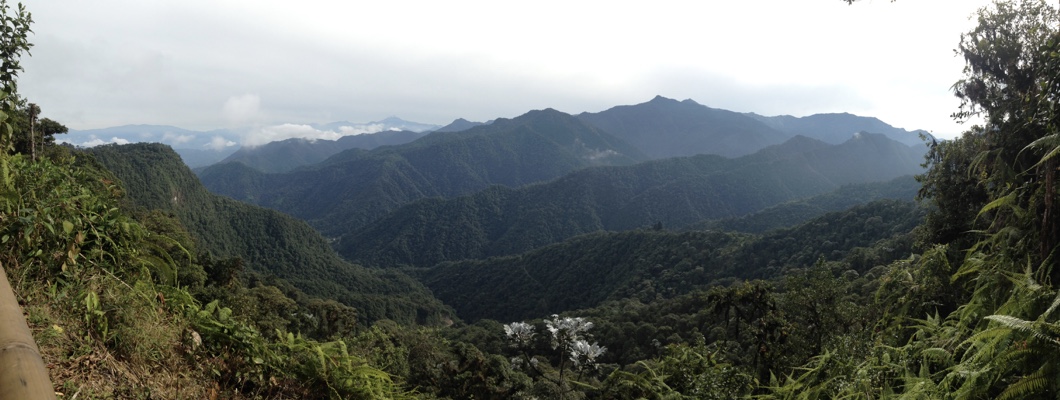
Support ecotourism in Latin America.
Brazil: If you like birding or neotropical nature-watching, try Yacutinga Lodge near Iguazu Falls (Argentina, near the Brazilian and Paraguayan borders). Owner Charlie Sandoval has a strong conservation ethic (and you can see several species of really cool manakins). http://www.yacutinga.com
Brazil: In Rio de Janeiro state, I highly recommend REGUA Guapiaçu (http://www.regua.co.uk/). The Mata Atlantica is fabulous e a comida e a gente do Brasil são otimos.
Ecuador: On the western slope of the Andes, the Mindo Cloudforest Foundation (MCF) runs the Milpe sanctuary at Km 91 near San Miguel de los Bancos (about 2.5 hours from Quito on the bus from the Carcelen station), where one can see Machaeropterus deliciosus, Club-winged Manakins, do their wing-hum display, and the fab Masius chrysopterus, Golden-winged Manakins, do their zip-snap-waddle dance on a mossy log (let us know if you see any of our banded birds). At MCF's Rio Silanche reserve (in from Km 126 on the Quito -- Puerto Quito highway, past Pedro Vicente), they have a great canopy tower and good leks of White-bearded Manakins (as well as occasional Red-capped and Blue-crowned Manakins).
Ecuador: In the Mindo area of the west slope, Septimo Paraiso Lodge is a comfortable place to stay with its own great trails and close to many of the great birding spots of the area.
Ecuador: In the SE, near Zamora (an access point for Parque Nacional Podocarpus) Copalinga Lodge is a very moderately-priced, thoughtfully run lodge close to the national park. It is a good spot for seeing Lepidothrix isidorei, Blue-rumped Manakin.
Costa Rica: Aguila de Osa Lodge (www.aguiladeosa.com) is a great place to see many of the birds of SW Costa Rica.